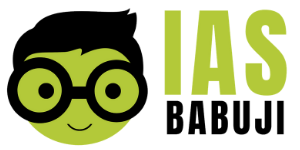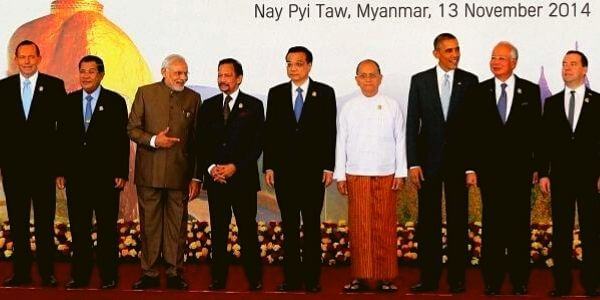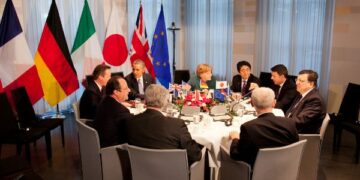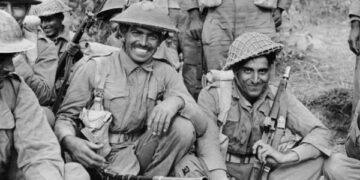This article describes India’s ‘Act East Policy,’ which was announced in 2014, and explains how it differs from the country’s 1991 ‘Look East Policy.’ This material would be very useful to aspirants studying for the UPSC IAS Exam. You’ll also learn about the history of the East Policy Act, progress made under the Act, and other important information. This topic comes under India and neighborhood relations (GS – II). So let us get started.
What is Look East Policy?
- India’s Look East policy aims to strengthen India’s position as a regional force and a counterweight to the People’s Republic of China’s strategic influence by cultivating significant economic and strategic ties with Southeast Asian nations.
- It was launched in 1991 and signaled a strategic shift in India’s worldview. It was conceived and enacted during Prime Minister Narsimha Rao’s in 1991–1996 administration, and it has been vigorously pursued by successive governments led by Atal Bihari Vajpayee (1998–2004) and Manmohan Singh (2004–2014).
- The success of the Look East strategy inspired the Mandarins of South-Block to make it more action-oriented, project-based, and outcome-oriented.
- India’s Act East Policy, which was launched in 2014 by Prime Minister Narendra Modi’s administration, succeeded the Look East Policy after a couple of decades.
Before we get started, let’s look at another essential topic for UPSC Exam: E-waste. This essay will teach you everything you need to know about E-waste. To learn more, go to this page. Let us now discuss the background of India’s Look East Policy, critical facts about India’s Look East Policy, what India’s Act East Policy is, and other relevant information for UPSC.
Background of Look East Policy
- China and India have been geopolitical rivals in South and East Asia since the 1962 Sino-Indian War.
- China and India’s neighbor Pakistan have developed close commercial and military ties, and the two countries have fought for influence in Nepal and Bangladesh.
- Following Deng Xiaoping’s arrival to power in 1979 and pursuing economic reforms, China sought to reduce fears of expansionism and, as a result, developed substantial trade and economic ties with Asian countries.
- China became Burma’s biggest ally and sponsored after the military regime was expelled from the international community in 1988 for violently suppressing pro-democracy demonstrations.
- During the Cold War, on the other hand, India had a shaky relationship with several Southeast Asian countries, and diplomatic contacts were given a low priority.
- India’s approach has centered on developing close economic and commercial relations, boosting strategic and security cooperation, and emphasizing historical cultural and ideological links, in addition to economic liberalization and moving away from Cold War-era policies and actions.
- India wanted to boost regional trade, investment, and industrial development markets.
- It has started a strategic and military collaboration with countries worried about China’s growing economic and geopolitical power.

Important Facts About Look East Policy of India
- With an asianisation component, the look east policy tends to connect to ASEAN and East Asian states.
- India has signed several multilateral agreements with East Asian countries, bolstering its act east policy.
- The following are some of the most essential bilateral relationships:
- Relations between India and China
- India-Myanmar relations
- Relations between India and Sri Lanka
- The following are other forums, regional groups, or platforms that have backed India’s look east policy:
- Economic Corridor between Bangladesh, China, India, and Myanmar (BCIM)
- BIMSTEC (Bay of Bengal Initiative for Multisectoral Technical and Economic Cooperation) is a multisectoral technical and economic cooperation initiative based in the Bay of Bengal.
- SAFTA stands for the South Asian Free Trade Area.
- ASEAN stands for the Association of Southeast Asian Nations.
- East Asia Summit (EAS)
- Mekong-Ganga Cooperation (MGC)
- The first Trans Asian Car Rally, which traveled from Guwahati to Batam (Indonesia) in 2004 and passed through India’s North-Eastern states, Myanmar, Thailand, Laos, Vietnam, Cambodia, Malaysia, and Singapore, signaled the beginning of India’s Look East Policy.
- The following are some of the government measures that have aided India’s Look East Policy:
- From Singapore to Istanbul, the Trans-Asian highway passes through India.
- The Trans Asian Railway connects Delhi and Hanoi.
- Myanmar, Bangladesh, and India are connected by an 800-kilometer-long transnational gas pipeline.
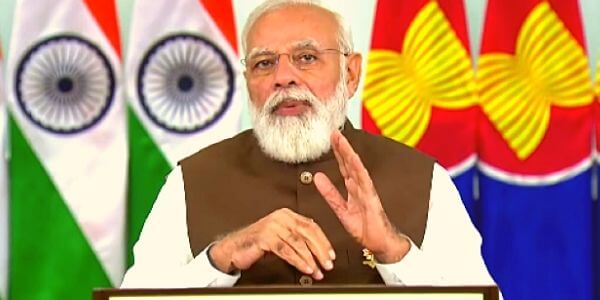
What is India’s Act East Policy?
- India’s ‘Act East policy is a diplomatic endeavor to strengthen economic, geopolitical, & cultural ties with the large Asia-Pacific region at various levels.
- The primary purpose of the ‘Look East Policy’ was to shift the country’s trading focus away from the west and its neighbors and toward Southeast Asia’s fast-rising economy.
- At the East Asia Summit in Myanmar in November 2014, the “Act East Policy” was revealed.
- Under the “Act East Policy,” the government is relying on the three Cs: culture, connectivity, and commerce, to develop relations with ASEAN countries.
- India is making an effort to develop significant commercial and geopolitical ties with Southeast Asian countries while also strengthening its relationship with the Indo-Pacific region.
- India’s priority under Act East is to strengthen economic ties with ASEAN while also ensuring increased infrastructure connections and foreign direct investment.
- Northeastern India’s regional development is being boosted.
- It is the successor of the Look East Policy, which was implemented in 1992.
Difference Between Act East Policy & Look East Policy
Both policies constitute two successive stages in the history of India’s policy toward Southeast Asia and East Asia. The table below lists some of the significant distinctions between India’s ‘Act East’ and ‘Look East’ policies.
| Act East Policy | Look East Policy |
| In 2014, the Act East Policy was launched. | In 1991, the “Look East” policy was launched. |
| When the Act East Policy was established in 2014, India was in a highly advantageous position in terms of economic might. | Due to the 1991 Economic Crisis, India’s economy was in shambles when the Look East Policy was implemented. India was in the process of liberalizing its economy. |
| The focus is on enhancing economic cooperation, creating infrastructure for improved connectivity, and most critically, strategic and security issues. | More focus should be given to improving economic cooperation. |
| This was started to address the shifting geopolitical landscape caused by China’s dominance in the South China Sea and growing influence in the Indian Ocean region. | The Indian economy was primarily reliant on the Soviet Union but with the collapse of the Soviet bloc, India was forced to look for alternate regions to sustain its economy, such as Southeast Asia. Because Japan and China had already established themselves as major economic players in the region, India realized there was a lot of room for growth in the region. |
| The cooperation under Act East Policy is more strategic and political in nature. To offset China’s dominance in the region, relationships with Japan, South Korea, Vietnam, Malaysia, and Australia have been upgraded to strategic partnerships. | The emphasis was on expanding economic and business ties with Southeast Asian nations. There was little emphasis on the Quad — India, the United States, Japan, and Australia – or on improving strategic partnerships with other countries in the area. |
Other Differences Are:
| Act East Policy | Look East Policy |
| More people-to-people encounters to focus on historical, cultural, linguistic, and religious linkages. | The historical relationships between India and ASEAN were not given much weight, and as a result, India’s Look East Policy did not capitalize on them. |
| The development of the North East is receiving a lot of attention. India believes that the country’s north-eastern area might serve as a gateway to East and Southeast Asia. Japan is assisting India by funding numerous infrastructural projects. | However, in its efforts to develop greater relations with East Asia, India’s northeast was overlooked. |
| India and Japan are working together to build Sri Lanka, Myanmar, and Bangladesh infrastructure. India’s northeast was overlooked in its efforts to develop greater relations with East Asia. | India has not prioritized infrastructure development in neighboring countries. |
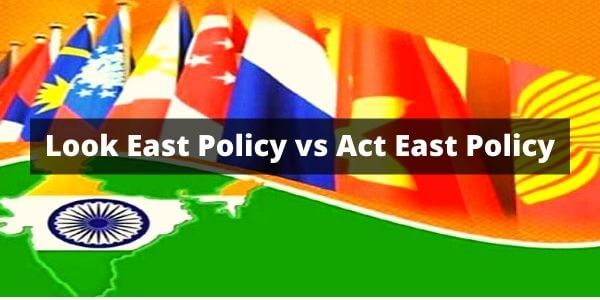
Way Forward – Look East Policy
- In the next years, India must maintain its focus on enhancing cooperation with ASEAN countries. The alliances should foster economic recovery, strategic collaboration in the fight against terrorism, and maritime security and defense cooperation.
- The AEP should also aim to improve India’s connection with ASEAN, notably in North East India, through the trilateral highway, the Kaladan project (which would connect Kolkata and Sittwe in Myanmar), and the Bay of Bengal Initiative for Multi-Sectoral Technical & Economic Cooperation (BIMSTEC).
- More attention should be paid to areas such as transportation, banking, information technology services, and environmental services if India and ASEAN’s economic links are to grow quicker.
- Japan is investing in infrastructure development projects in India’s North East. India considers that the North East is the doorway to Southeast Asia and East Asian countries under current Prime Minister Modi.
- As a large portion of the world’s trade goes through this region, more emphasis should be placed on air connectivity, land connectivity, and maritime security.
- In terms of civilization, Buddhist and Hindu ties could be pushed to foster new connections among individuals.
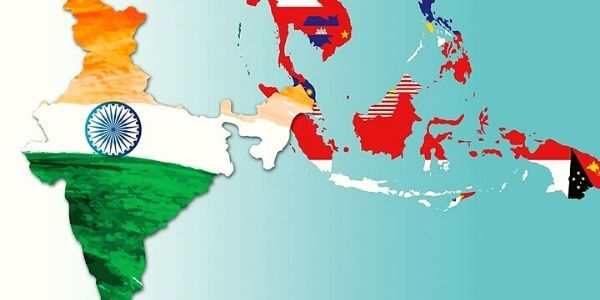
Conclusion
In this article, You’ll learn everything you need to know about India’s look east policy, India’s act east policy, and other important aspects of the UPSC exam. The time has come for India to forge significant commercial ties with Southeast and East Asia and other Indo-Pacific nations. While this will strengthen India’s Act East, it will also gradually erase its economic isolation from the East and North East. Therefore, India needs to rethink its Act East policy and the consequences of poor economic performance and sectarian politics at home. For more information about the UPSC 2022 examination, go to the official website by clicking here. Also, for UPSC, remember to read about the differences between Act East Policy and Look East Policy. Then, read the full article and make a list of the key points.
FAQ
India’s Act East Policy succeeded its the Look East Policy. The main goal was to increase involvement in all areas with Southeast Asian countries as well as countries in the Far East such as Japan and South Korea, as well as countries in the Pacific such as Australia.
ASEAN is an acronym that stands for the Association of Southeast Asian Nations. Brunei, Cambodia, Indonesia, Laos, Myanmar, Malaysia, the Philippines, Singapore, Thailand, and Vietnam are ASEAN members.
India’s Act East policy is a diplomatic attempt to establish economic, geopolitical, and cultural ties with the large Asia-Pacific region. The Act East program is seen as a modernization of the Look East Policy, which was announced in 1991 by then-Prime Minister P.V. Narasimha Rao.
Editor’s Note | Look East Policy
For the UPSC examination, learn everything you need to know about the Look East Policy of India and India’s Act East Policy. Finally, self-motivated individuals always find a way to finish a task. In addition, We suggest making a list of all the essential points that you can go over throughout the exam. Lastly, Best wishes for your upcoming exam. Keep in mind that you can attain your goals!
